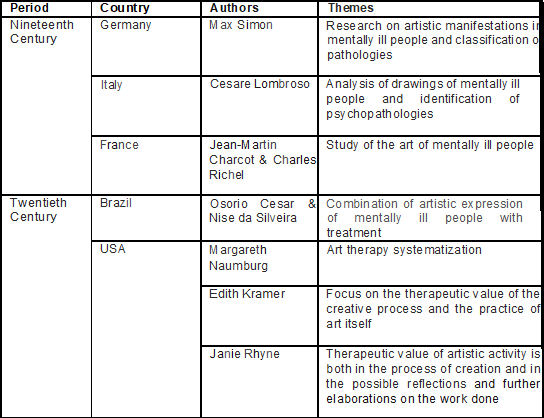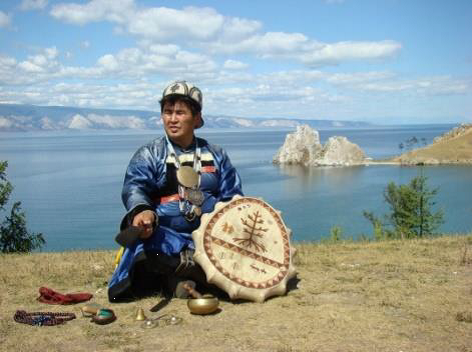Submissions
Submission Preparation Checklist
As part of the submission process, authors are required to check off their submission's compliance with all of the following items, and submissions may be returned to authors that do not adhere to these guidelines.- The contribution is original and unpublished and is not being evaluated for publication by another journal.
- The text adheres to the editorial patterns and bibliographic requirements outlined in the Authors Guidelines.
- Submission files must be in Microsoft Word, OpenOffice or RTF format (as long as they do not exceed 2MB)
-
In case of submission to one of the peer reviewed sections (Original Research Article, Case Study, Reflection Article, Literature Review Article), the instructions available in Ensuring blind evaluation by pairs were followed.
-
The cover sheet and the Copyright Transfer and Authors Responsibility Agreement, signed by all authors of the article, were forwarded as supplementary documents (PDF).
- The title and abstract are presented in the text in Portuguese, English and Spanish.
- URLs and DOIs for references were informed when possible.
- The descriptors are valid terms, taken from: Terminologia em Psicologia (http://newpsi.bvs-psi.org.br/cgi-bin/wxis1660.exe/iah/?IsisScript=iah/iah.xis&lang=P&base=TERMINOLOGIA)
-
Additional documentation:
If applicable, the “Informed Consent Form” document, signed by the patient;
Ethics Committee: Self follows the instructions of the legislation in force: Lei n. 14.874, de 28 de maio de 2024. Provides for research with human beings and institutes the National System of Ethics in Research with Human Beings. Available from https://www.planalto.gov.br/ccivil_03/_ato2023-2026/2024/lei/l14874.htm.
Original research article
Presentation of unpublished data and/or scientific evidence derived from original scientific investigation about themes relevant to the field of analytic psychology and obtained with different methodologies such as clinical essays, cohort studies and single-case experimental design models.
These kinds of work are evaluated by Self's ad hoc reviewers, within a double-anonymous review process, in which authors and reviewers remain hidden.
It is mandatory that the original research articles include the following in the text file:
a) Title in Portuguese, English and Spanish.
The title of the article in the original language must contain up to 100 characters with spaces.
b) Abstract in Portuguese, English and Spanish.
The abstract must contain from 150 and 300 words and must present the work's objective, methodology, outcomes and conclusions in a single paragraph without subdivisions in chapters or sections.
c) Descriptors (controlled vocabulary terms) in Portuguese, English and Spanish. From three (3) to six (6) descriptors must be presented, separated by coma and in lowercase (except for proper nouns).
It is mandatory the use of valid terms, extracted from Terminology in Psychology. Please see: (http://newpsi.bvs-psi.org.br/cgi-bin/wxis1660.exe/iah/?IsisScript=iah/iah.xis&lang=P&base=TERMINOLOGIA).
It is recommended that the elaboration of the text follow the structure of a scientific manuscript containing:
Introduction, with the presentation of the topic researched, the objective of the research and background on which it was developed;
Methodology, describing in detail the method used to develop the research, the participants in the study, procedures, instruments, selection of theoretical references, etc.;
Outcomes;
Discussion;
Conclusion or Final Considerations;
Acknowledgements (if applicable);
Authors contributions; and
References.
The maximum length of an article of original research must be 6.000 words, including image captions, tables, acknowledgements and other elements, and excluding abstracts and information on the cover, and also the list of references. The number of references is limited to 30.
Case study
Analysis of a specific case of interest to the field of analytic psychology.
This type of work is evaluated by Self's ad hoc reviewers through a double-anonymous process in which authors and reviewers remain hidden.
It is mandatory that the case studies include the following in the text file:
- a) Title in Portuguese, English and Spanish.
The title of the article in the original language must contain up to 100 characters with spaces.
b) Abstract in Portuguese, English and Spanish.
The abstract must contain from 150 and 300 words and must present the work's objective, methodology, outcomes and conclusions in a single paragraph without subdivisions, chapters or sections.
c) Descriptors (controlled vocabulary terms) in Portuguese, English and Spanish. From three (3) to six (6) descriptors must be presented, separated by coma and in lowercase (except for proper nouns).
It is mandatory the use of valid terms, extracted from the Terminology in Psychology. Please see: (http://newpsi.bvs-psi.org.br/cgi-bin/wxis1660.exe/iah/?IsisScript=iah/iah.xis&lang=P&base=TERMINOLOGIA).
It is recommended that the elaboration of the text follow the structure of a scientific report of a case study containing:
Introduction, with the presentation of the case studied, the objective of the study and background on which it was developed;
Detailed report of the case;
Discussion;
Considerations;
Acknowledgements (if applicable);
The authors' contributions; and
References.
The maximum length of a case study must be 6.000 words, including image captions, tables, acknowledgements and other elements, and excluding abstracts and information on the cover, and also the list of references. The number of references is limited to 30.
Reflection article (essay)
Presents a conceptual and theoretical approach about themes of interest to the field of analytic psychology. The discussion is guided by theoretical and scientific references.
This type of work is evaluated by Self's ad hoc reviewers through a double-anonymous process in which authors and reviewers remain hidden.
It is mandatory that the case studies include the following in the text file:
- a) Title in Portuguese, English and Spanish.
The title of the article in the original language must contain up to 100 characters with spaces.
b) Abstract in Portuguese, English and Spanish.
The abstract must contain from 150 and 300 words and must present the work's objective, methodology, outcomes and conclusions in a single paragraph without subdivisions in chapters or sections.
c) Descriptors (controlled vocabulary terms) in Portuguese, English and Spanish. From three (3) to six (6) descriptors must be presented, separated by coma and in lowercase (except for proper nouns).
It is mandatory the use of valid terms, extracted from the Terminology in Psychology. Please see: (http://newpsi.bvs-psi.org.br/cgi-bin/wxis1660.exe/iah/?IsisScript=iah/iah.xis&lang=P&base=TERMINOLOGIA).
It is recommended that the elaboration of the text follow the structure of an essay containing:
Introduction, with the presentation of the theme studied, the objective of the essay and background on which it was developed;
Development, informing the method used to select theoretical references in the most detailed way possible;
Discussion;
Considerations;
Acknowledgements (if applicable);
Authors' contributions; and
References.
The maximum length of a reflection article must be 6.000 words, including image captions, tables, acknowledgements and other elements, and excluding abstracts and information on the cover, and also the list of references. A maximum of 30 references will be accepted.
Literature review article
Critical and updated evaluation of scientific articles already published that deal with a certain subject of interest to the field of analytic psychology.
This type of work is evaluated by Self's ad hoc reviewers through a double-anonymous process in which authors and reviewers remain hidden.
It is mandatory that the case studies include the following in the text file:
- a) Title in Portuguese, English and Spanish.
The title of the article in the original language must contain up to 100 characters with spaces.
b) Abstract in Portuguese, English and Spanish.
The abstract must contain from 150 and 300 words and must present the work's objective, methodology, outcomes and conclusions in a single paragraph without subdivisions in chapters or sections.
c) Descriptors (controlled vocabulary terms) in Portuguese, English and Spanish. From three (3) to six (6) descriptors must be presented, separated by coma and in lowercase (except for proper nouns).
It is mandatory the use of valid terms, extracted from the Terminology in Psychology. Please see: (http://newpsi.bvs-psi.org.br/cgi-bin/wxis1660.exe/iah/?IsisScript=iah/iah.xis&lang=P&base=TERMINOLOGIA).
It is recommended that the elaboration of the text follow the structure of a scientific manuscript containing:
Introduction, presenting the topic studied, the objective of the research and background on which it was developed;
Methodology, describing in detail the research method, inclusion and exclusion of data and theoretical references;
Outcomes;
Discussion;
Conclusion or final considerations;
Acknowledgements (if applicable);
Author contribution; and
References.
The maximum length of literature review articles must be 7.000 words, including image captions, tables, acknowledgements and other elements. A maximum of 50 references will be accepted.
Review
Critical review of books films, theatre plays, with a maximum length of 2.000 words.
This kind of work is not evaluated by Self's ad hoc reviewers and there is no need for abstract or descriptors.
Self publishes a maximum of two reviews per year/ issue.
Letter to the editor
Letter to the editors about work published in Self, with the objective of improving scientific debate on the topics exposed in the articles, case studies and reviews. The letters must contain a maximum of 1.000 words.
Copyright Notice
The Self adopts the Creative Commons "Attribution 4.0 International" license, classified as a Free Culture License, which allows copying and distribution of any works published in any means or format and allows others to change, make adjustments or create derivative works for all uses, even commercial, as long as it is given proper credit to the publication. More details in http://creativecommons.org/licenses/by/4.0/.
When authors submit their works to the journal, they accept the terms of this license and agree to assign the copyright of the manuscript to the publication. Along with their work, the authors must send a signed copyright assignment document.
Privacy Statement
Names and addresses informed to the Self journal will be exclusively used for the services provided by this publication and will not be available for other purposes or to third parties.











